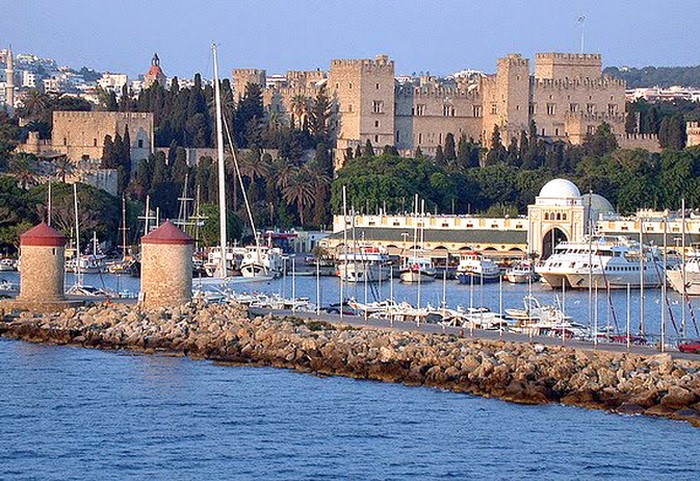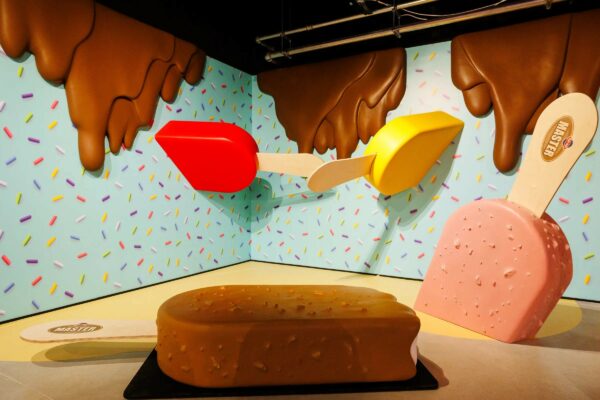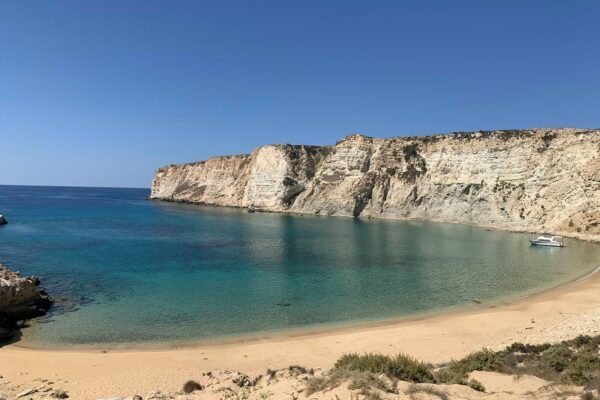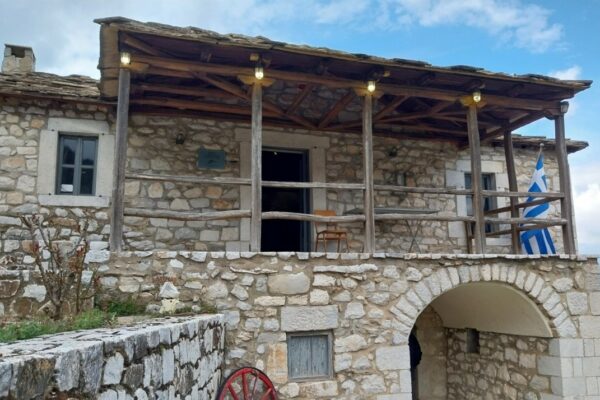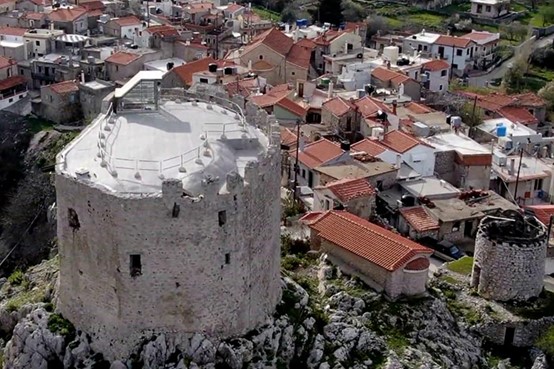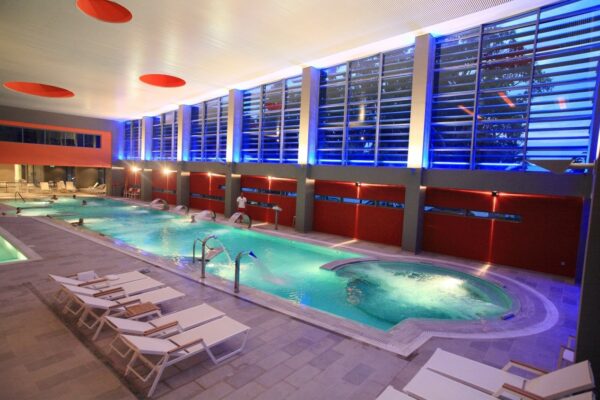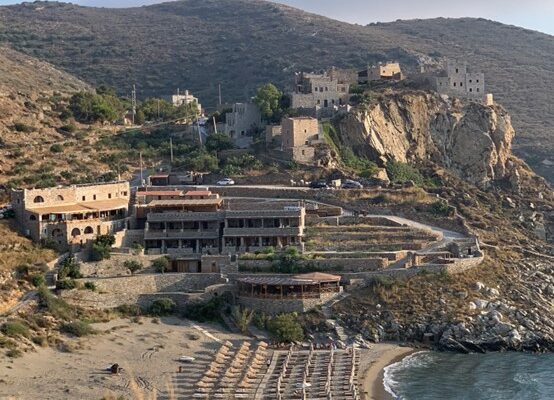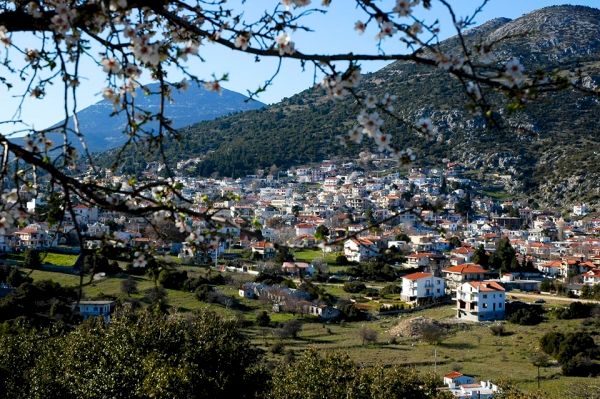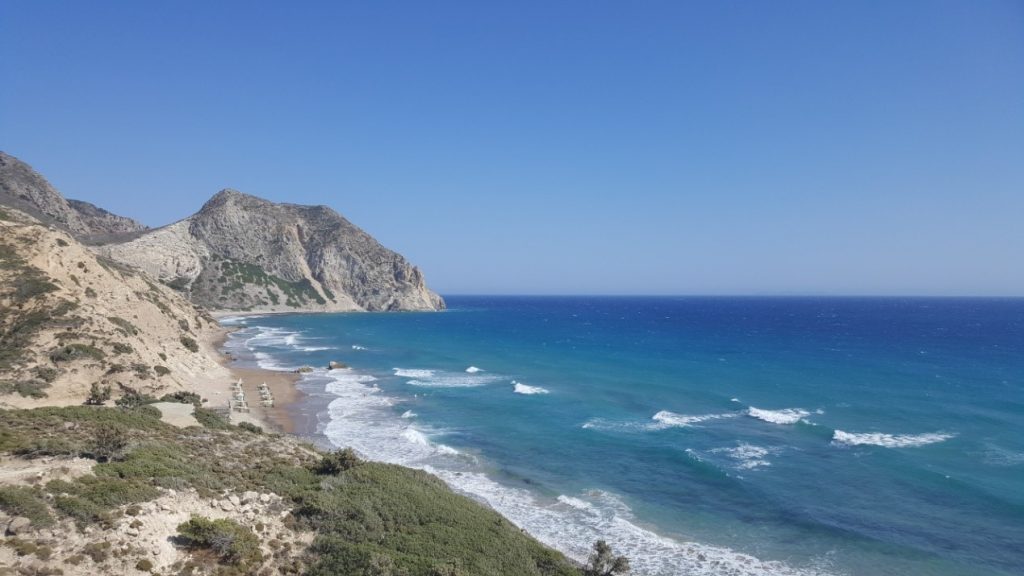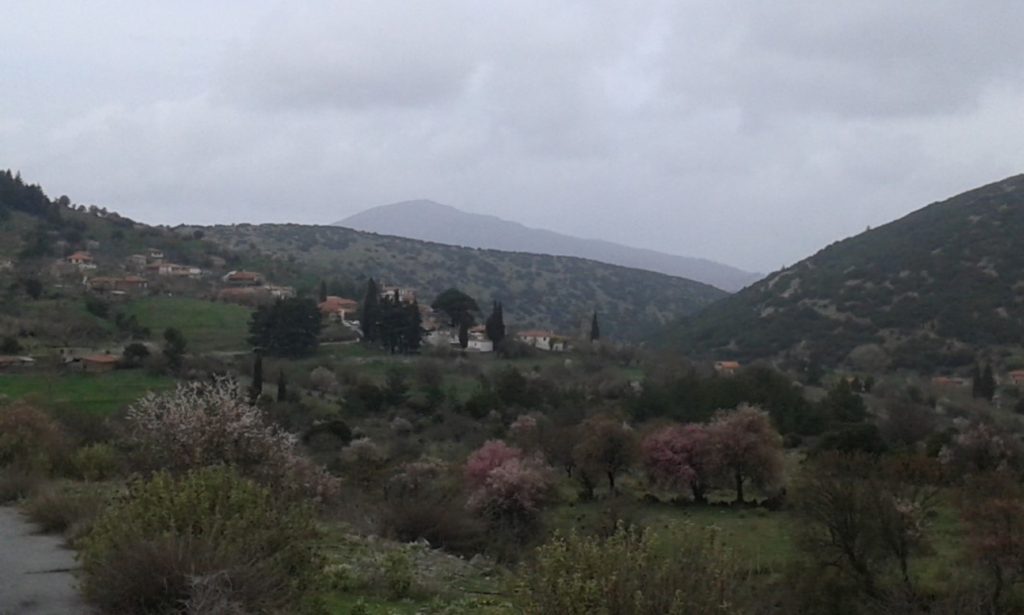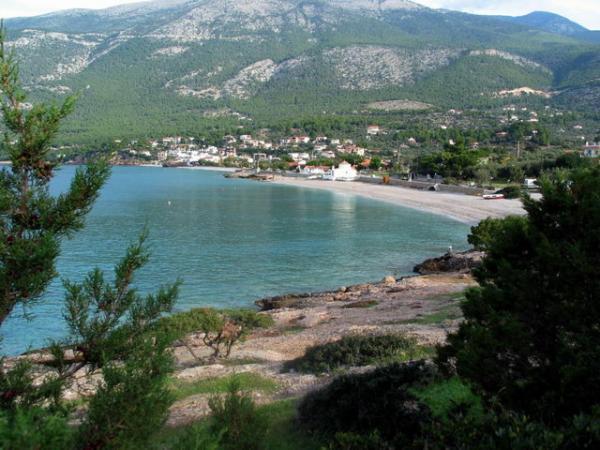Ancient and Medieval Rhodes, Points of interest
HISTORICAL DATA
The 1550 BC the remains of Late Minoan settlement at Thirty, They testify that the island was inhabited by Cretan merchants. The 1440 B.C. Achaean tribes settled at "Filerimos" where the Mycenaean era begins. There they built a fort, Ancient Ialyssos acropolis, known as "Achaia" or "fortification" or "Filerimos". The Dorians the 1100 B.C occupy the island that the handing in 3 parts, Kamiro, Ialysos and Lindos. Founded the "Doric Hexapolis" along with other 3 cities, Kos, Cnidus and Halicarnassus, in Asia Minor. Then the island gets a great economic prosperity due to its location, as a maritime crossroads for trade, dominates the Mediterranean.
The 491-90 B.C. the Persian general Datis reaches Rhodes wherein occupies its Citadel. Forced to lift the siege after the "Athena Lindia miracle". Cassius the 48 B.C. conquers Rhodes, destroys all artifacts on the island, except for the statue of the Sun god, prostate Rhodes, the sculptor Lysippos.
During the 2th -1th century BC. Rhodes is the center of literature and arts attracting great orators, poets, philosophers mainly from Rome, Julius Caesar, Mark Antony etc. where Greek study.
Christianity begins to spread and the 57 A.D. the Apostle Paul, after Kos, visits Rhodes namely the ship arrives at the port of Lindos, known today as "Saint Apostle", the chapel. The 155 AD an earthquake destroyed the island, while the 263 or 269 A.D. Goths invade it and plunder. The 344 or 345 A.D. and 515 A.D. earthquakes destroy ancient city walls where then up and into them will develop the medieval city founded by the Knights.
By 7The up the 9The A.D. the island receives the Persian invasions, Saracens and other Arabs. the 11The reach the Venetians and Genoese traders because of its location on the island, as a commercial crossroads, commercialize Island. With the Fourth Crusade in 1204, governor of the island is rich Byzantine ruler, Leo Gavalas, and since 1248 until the 1250, Genoese occupied Rhodes. From 1250 until the 1261 The island belongs to the Empire of Nicaea, while the 1261 – 1309, They appear several privateers who dominate the island.
The island's most important periods starting from 4The century. A.D. and are as follows :
- 1309 – 1522, Knights. Rhodes was occupied by the Knights of St John of Jerusalem .The Knights remained on the island 213 years, up to 01-01-1523 ie until the Turkish occupation.
- 1522 -1912, Ottoman. The Turks occupied the island led by Suleiman I the Magnificent who entered the city on 27-12-1522. Rhodes remained under Turkish domination for 4 centuries to May 1912 when the island was occupied by the Italians.
- 1912 – 1947, Italokratia.
At 28 -10 -1947 Rhodes, like other Dodecanese incorporated Greece.
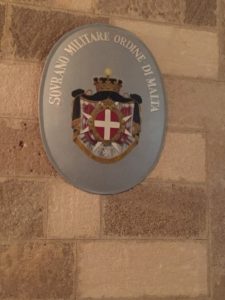
TO TAGMATOS EMBLEM OF THE KNIGHTS OF ST JOHN OF JERUSALEM (SMOM) or MALTA Rhodes (Camo Gray SOVEREIGN ORDER OF MALTA)
The MEDIEVAL RHODES - Knights
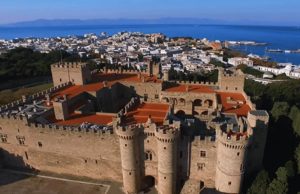
At 15-08-1309 the island was occupied by the Order of the Knights of St. John of Jerusalem. The Order originally founded to protect pilgrims in the Holy Land. Subsequently, having established the fort of St. John of Acre in Palestine, acquired military organization and strength attracting members, many nobles from the West. The Order had three classes, Knights, They were gentle warriors, their priests and the auxiliary brothers ή "Freres Servants'. The members of the Order, depending on their place of origin was divided into groups or "languages», so we have the language of Provence, of France, Auvergne, Italy Spain. Later added other groups so we, Languages of Aragon, Castile, England and Germany.
- ANCIENT PORT OF RHODES
Rhodes had two ports, the Mandraki or Port of the Galleys, at Knights, or Turkish Tersःane port. Located at the northernmost point, after the Arms Depot and today is organized marina. Est in defining one mole length 460 m., with 3 windmills and the goal of dominating the fort – Lighthouse St. Nicholas(1464 -1467), which was built by M.. Master Zacosta expense of the Duke of Burgundy, Philip.
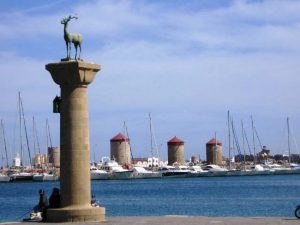
At the end of the pier, are symbols of Rhodes, a bronze and a bronze deer doe. Some archaeologists argue that the edge of the pier was Colossus.
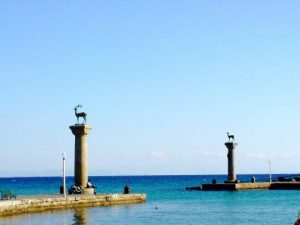
The Colossus was built in 282 B.C. by Greek sculptor Thanks to Lindos, from Rhodes, pupil of Lysippos, in honor of the god Apollo who protected the island from the siege of Demetrius the Conqueror. It was a bronze statue, depicting the sun god, height 33 m. standing on a pedestal 12 m. and according to legend, The statue was to walk off and bang on both ends of the port. Colossus collapsed 222 B.C., after an earthquake and was cluttered the ground for more than 100 years. The 654 A.D., Saracens who plundered Rhodes sliced statue and sold as metal.
The Colossus of Rhodes is one of the Seven Wonders of the Ancient World.
The Trade, was the commercial port and today is the main port. in NW. end of the harbor there is a small pier, that the edge was built the tower or tower Arab Naillac or during the Turkish Tower Knights (1400). The Naillac tower was a square tower, built by M.. Master De Naillac destroyed by earthquake 1864 and parts of at sea. Across Southeast. side, the pier where there were 13 windmills, there is a round Tower of Angels (1440 -1454), built by M.. Master D 'Aubusson at the expense of the King of France. The opening of the ancient harbor the closed thick chain that one end of the tower was Naillac and the other to the Tower of Angels.
- MESAIAONIKA WALLS – MEDIEVAL TAFROS
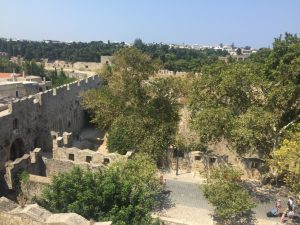
The walls of the medieval city of the Knights developed around Emporio which already existed fortifications from the Byzantine period (1285). They started up by the 1478 until 1521 by the Grand Masters, D Aubusson, D 'Amboise and last Villiers D' L 'Isle-Adam. Then when 1522 Suleiman I the Magnificent conquered the island some extra elements added to the walls.
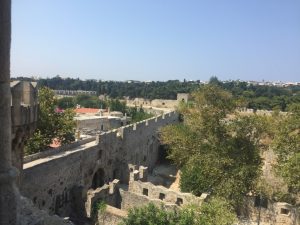
The fortification consisted of a main wall, It was a tall outer wall, vertical or inclined, built around a moat (2.300 m.) and a smaller inner wall, the "rampart" that reached this as the depth of the trench (latitudinal 40-45 m. and a depth of 20 meters.).
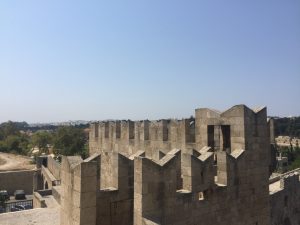
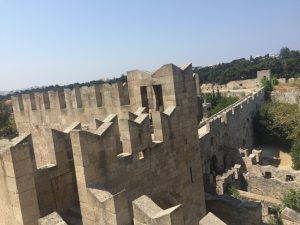
EPALXEIS AND TOWERS OF MEDIEVAL OCHYROSIS
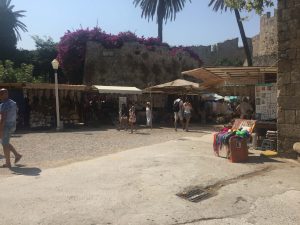
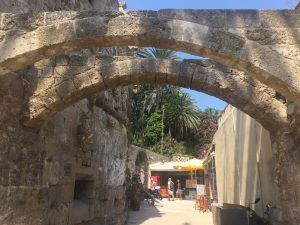
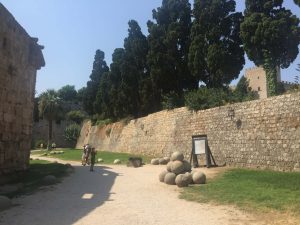
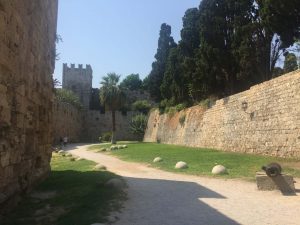
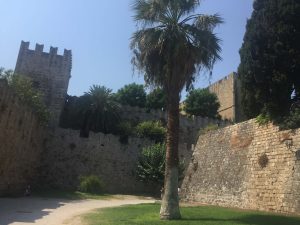
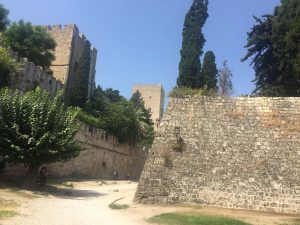
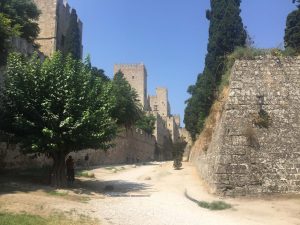
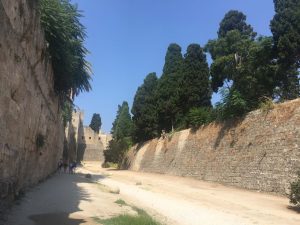
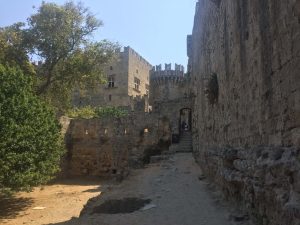
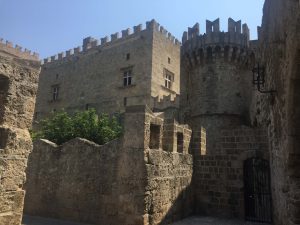
On the top of each wall was no way for fighters and many ramparts with towers that protected the. Knights each group had its own section of the wall that guarded with the tower that was in this position.
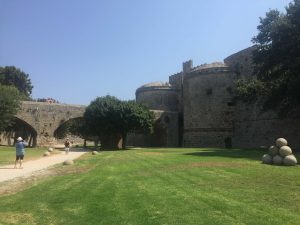
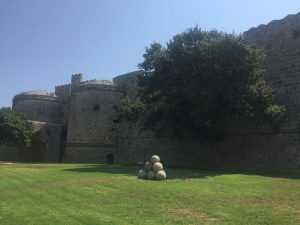
THE GATES AND TOWER OF MEDIEVAL RHODES
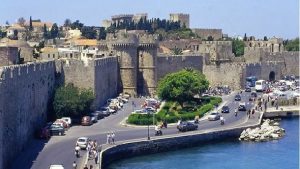
Gates and towers are located around the medieval walls of the Old City and took its name either from small churches close to them either by the M Names. Masters.
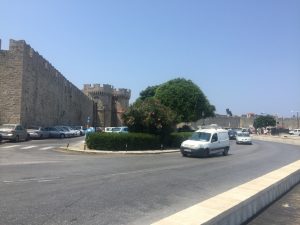
Details are :
- Gate D’ Amboise, just below the Palace of the Grand Masters. Protected by two cylindrical towers. Beside her is the strongest bastion of the city, bastion St. George. Built by M.. Master D 'Amboise the 1512 (Platanakia).
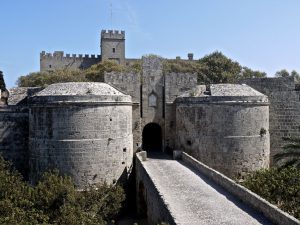
- Gate of St. Athanasios or «new Gate», Located just opposite the Church of St. Francis. The gate remained closed for many years. The Gate was Suleiman the Magnificent came and conquered Rhodes, near the Tower of the Virgin (Republic 29).
- Gate of Saint John or Koskinou, so called because facing the village Koskinou or "red Door"Or in Turkish"Kyzyl kapou». XHARACTERISTICS of the ports of the M. Masters. The name comes from red blood Rhodian population was massacred by the Turkish siege (Archbishop Efthymiou 34, near Diagoras Stadium).
- gate Akantia, It leads from the old town to the area of Akantia. It is known as the gateway Kova or Lagkani.
- Gate St. Catherine, very small gate which is located just in front of the Church of St. Panteleimon and leads directly opposite the port.
- Gate of Our Lady, is an admission that there is the knightly period. Located near the sea gate and formed to have the Rhodians easier access to the old town.(Komninon street 2).
- Gate: Seafood Door Marina or Port Gate, It is one of the main entrances to the old city and the Palace of the Grand Master.
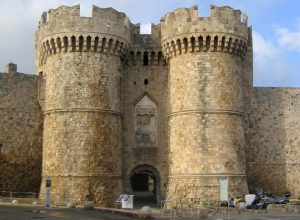
- gate Tarsana, Built in the 14th century by the Grand Master, Located close to the Temple of Venus. It called shipyard gate because it resulted in the shipyards of the area.
- Gate St. Paul, near the breakwater pier with the Tower Naillac, located near Cologne area.
- gate of Freedom, This is leading to the historic Old Town in Mandraki. Located near Saint Demetrios Church, just behind the Porte St. Paul, (in Sachtouri coast, Symi square).
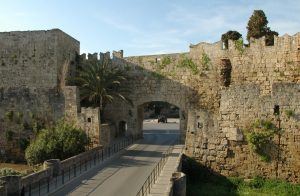
- Gate of St. Anthony, is input for Palace M. Master (the street Orpheus) and then the sea gate considered the most beautiful of the old city.
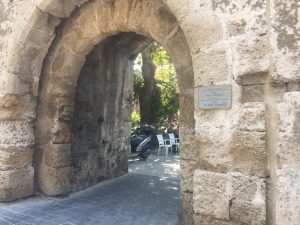
- Tower of St. George, It has a pentagon shape and formerly portal. It bears the emblem of the last Grand Master of Rhodes, του Philippe Villiers de l'Isle Adam. Located in Timokreontos Street 39, end of Apollonius Rhodius road, near Muslim Library.
- Tower of rules, or during the Turkish "Karretou", west near the Porte Saint Anthony, the commercial port.
- Naillac tower, built by Grand Master Philibert de Naillac. He had a square shape and was used as observation port. By earthquakes in the 19th century was badly damaged and the Turks demolished.
- Tower Mills, known as the Tower of France which served to protect the port.
POINTS OF INTEREST MEDIEVAL RHODES
The Old Town consists of two portions, the bigger the Burgo located in the southern part, the occupying Turkish and Jewish Quarter and Collachium, with the Palace M. Master or "Castelo» Castello which was the quarter of the Knights.
The Knights built the Palace of the Grand except where their headquarters was the residence of M.. Master of the Order. The same also built the holster, the Hospital (today Archaeological Museum) and the various "accommodation of Languages»Or« Auberge », the noble Knights hosted on the island.
From 1988 the medieval Old Town of Rhodes belongs to the list of World Heritage of UNESCO and is a member of Organization of World Heritage Cities (Organization of World Heritage Cities).
Details of the medieval Old Town attractions are :
- gate of Freedom (1924), Entrance to the medieval town, near Coast Sachtouri
- Temple of Venus (3th B.C.)
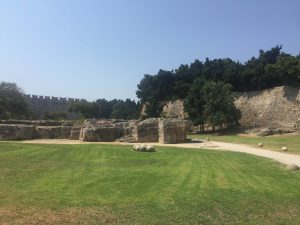
- medieval moat
- Inn of the Tongue of Auvergne (1407)
- holster or «Armeria», constructed at the time of M. Master, R. Pins (14th). Today it houses the People Cosmetic Rhodes Collection (Gjirokastra square)
- Street of the Knights or "Street of the Castle" (15th), built on an ancient street. It is a straight road, length 200 m. and width 6 m. which is surrounded by buildings in Gothic style, district of «Collachium» Knights
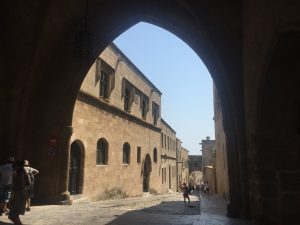
- Inn of the Tongue of England (1480) built by M.. Master D 'Amboise destroyed and 1919 reconstructed.
- hospital Knights, The construction began by M.. Master De lastic (1439) and completed by M. Master D 'Aubusson (1483). Today it houses the Archaeological Museum of Rhodes, and at entry, the relief scene is preserved of 2 Angels holding the flag of the Order.
- Inn of the Tongue of Italy (1519)
- small Palace, (coast Sachtouria 10)
- Inn of the Language of France (end 15th ), built by M.. Masters, D 'Aubusson και D' Amboise.
- Church of Saint Demetrius or "Dionysion" (1499), Gothic, Gothic shrine and coats of arms of Pope, France and England, close to Tower of St. Paul (square Al. Christoforou 3-5).
- Cappelania of France or «Cappelania», It was the home of the church sacristan of the church of St. Demetrios.
- Inn of the Tongue of Provence
- Property Spain Language (1421-1512), manufactured by M. Masters, Fluvian και D 'Amboise.
- Church of St. John ή Knights of Saint John (14th), patron of the Knights opposite the Inn of Spain Language, left at the end of Road Knights.
- Palace of the Grand Masters or "Castelo" (14th ), opposite the Church of St. John, NW. the fortification, at the end of the Street of the Knights, built on the hill, the ancient citadel position.
Grand Master PALACE

built in the 14The century. B.C. by the Knights as the residence of the Grand Master and as an administrative and religious center of the island. During the Ottoman domination the Palace was used as a decision-making center and prison. The 1856, after munitions explosion destroyed a large part of. The 1930 Italian conquerors repaired the damaged part in order to transform it into the seat of the governor of each island. Benito Mussolini turned it into a residence, according to the inscription in the palace.
The mosaics on the floors of the palace were transferred by the Italians from various rich buildings Kos order to decorate and to give glory. It is a rectangular medieval building built around a central patio. Built on the highest point of the medieval city, at the ancient Temple of the Sun. The palace had two entrances, seafood or Port Gate or «Porta Marina» and the Porte Saint Anthony.
Today the Palace of the Grand Master is a museum where the first floor you will see artworks, furniture and antiques from the Middle Ages, mirrors, paintings, armor, weapons etc.. On the ground floor rooms, there is a permanent exhibition entitled "The Rhodes from early Christian times until its conquest by the Turks (1522), where you see ceramics, sculptures, Byzantine icons etc.. To enter the inner courtyard that leads to the Palace of the Grand Master will use the input from the Porte Saint Anthony (There ticket with which you can get in and the permanent exhibition of the Palace, tel. : 2241365270).
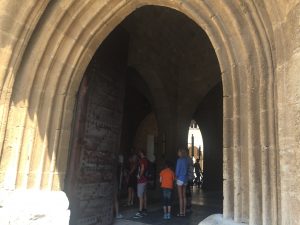



INSIDE THE PALACE
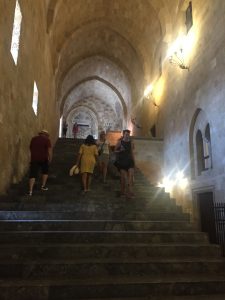
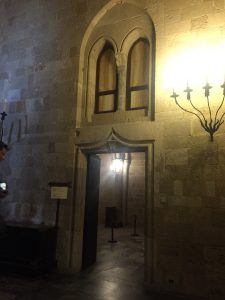
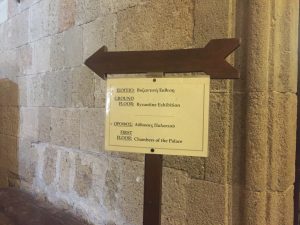
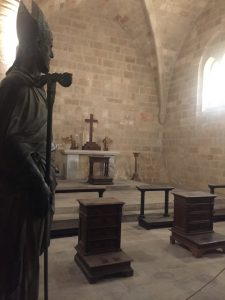
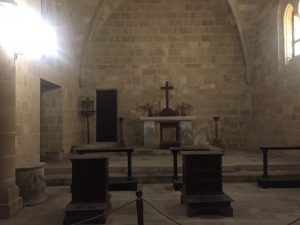
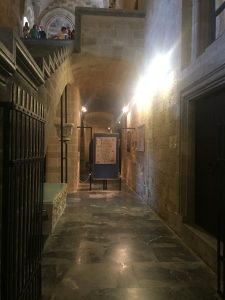
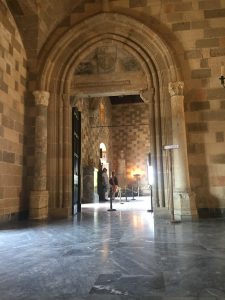
IMPRESSIVE MOSAIC FLOOR IN THE PALACE
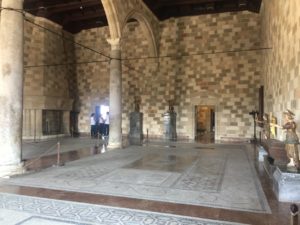
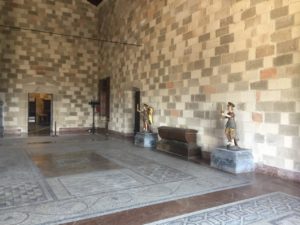
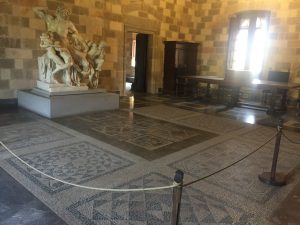
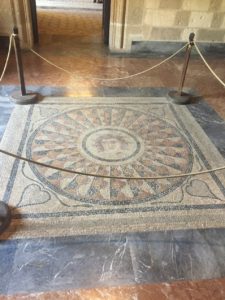
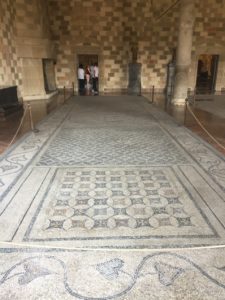
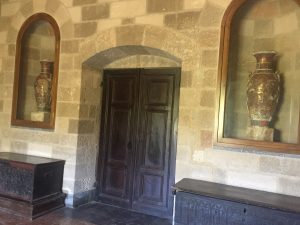
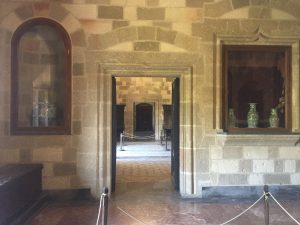
FURNITURE INSIDE medieval palace
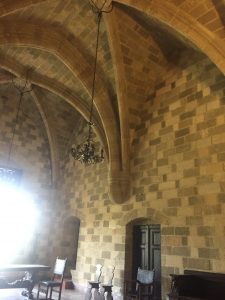
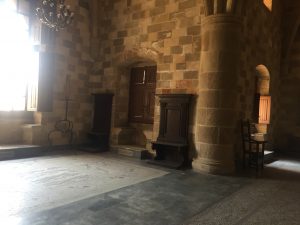
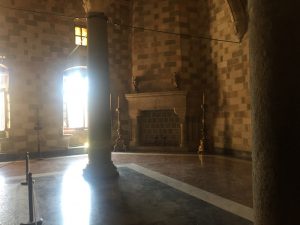
ROOM WITH ART, FURNITURE AND MIRRORS

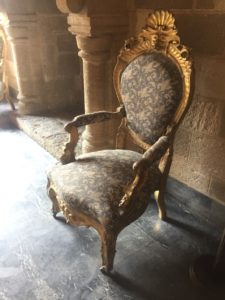
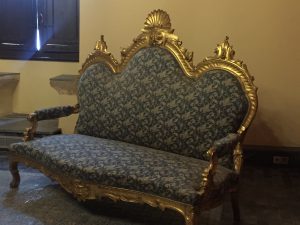
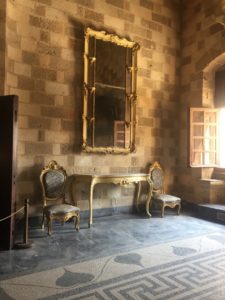
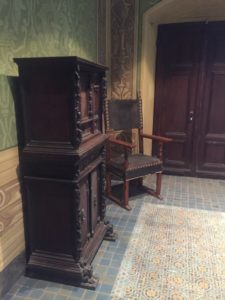
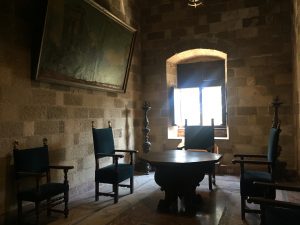
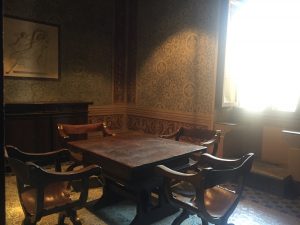
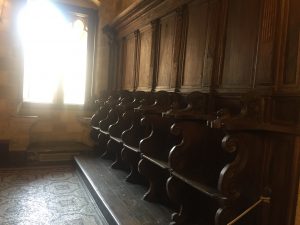
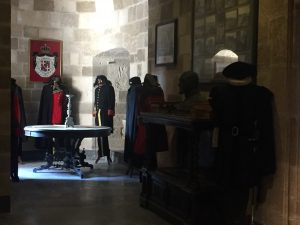
The Turkish and Evraiki RHODES
The Turkish and Jewish Quarter, the old burgo = komopoli, bounded by the streets Socratous (his way Bazaar) and Pericles.
In the area, during the Ottoman, there were about 14 Windows. Today some of them have been done Orthodox churches, others are damaged, others are open to visitors and is a place of worship for Muslims.
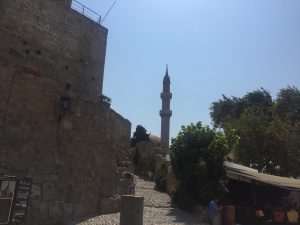
ROUTE SOKRATOUS - "ROAD Bazaar"
- Shrine Suleiyman A of Magnificent or Suleiman Mosque (1523), with the characteristic minaret height 34,5 m. (Apollonius Rhodius 11 and Socrates)
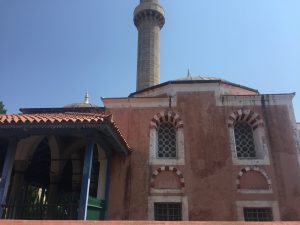
GLASS Suleiman A MEGALOPREPOUS GLASS Suleiman A MEGALOPREPOUS
- Muslim Library Hafuz Ahmed or Ahmed Hafous (1794) opposite the Mosque Suleiman I (Apollonius Rhodius 11, tel. : 2241038340)

LOG IN MUSLIM LIBRARY AHMET Havouzas

ROUTE APOLLONION RODIOU

ROUTE Bazaar
- Clock Tower or Medieval Clock Tower (1890), He made it the Fatih Pasha (1851 or 1857),Located opposite the Suleiman Mosque, (Apollonius Rhodius 11, Square Clock)
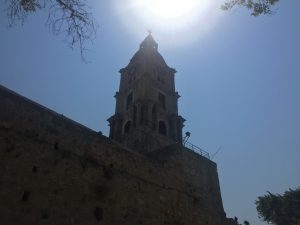
- Chourmali mosque or madrassa Hurmali Medresse or Hurmali Mescit, Byzantine and Gothic. Built originally as Orthodox monastery (14th ) and later given to the Franciscan monks and renamed the church of Saint-Sauveur (15th ) (Apollonius Rhodius 8)
- Mehmet Aga Mosque and Aga Djami (Socratous 73-99 and St.Fanourios)
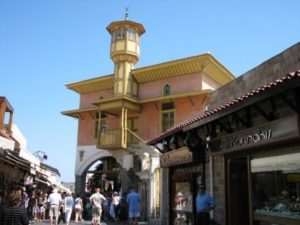
- Mosque Ibrahim Pasha and Ibrahim Pasha (1540 or 1541), It is the oldest Ottoman building in the island. It consists of a building with twelve-sided dome, a white minaret with balconies and a fountain. Today it is a place of worship of Muslims, open to the public (Plato Square)
- Mosque Taketzi or Taketji, the church of Agia Paraskevi
- Sadr mosque or Sadri Celebi, simera, Cathedral of St. Mark (Hierocles street, the square area of the clock)
- Mustafa Sultan Mosque or Djami Moustafa (1764-1765). The mosque has a large rectangular building and a fountain. Today given events of the Muslim community on the island (Menekleous 5, square Arionos)
Turkish Baths or the Primary Bath Sultan Mustafa generation Bath. It is open to the public but you need to bring your own towel (Menekleous 11, square Arionos, tel. : 2241027739
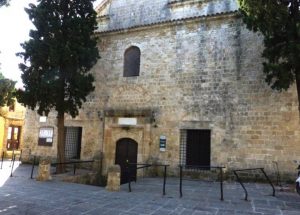
MUNICIPAL BATHS
- Kadi Mosque or Kname Djami, today is the church of Constantine and Helen, in the area of Public Baths region (Menekleous)
- Mosque Abdul Tzelil, Originally a Gothic church (15th )
- Mosque Bab-th-Mesdud or Bhelp Mestud, o old church of St. Athanasius, Gate of St. Athanasios
- Recep Pasha Mosque or Reijab-Pacha (1588), East Gate of St. Athanasios. It is one of the most important Ottoman monuments in the Aegean and consists of the mosque - fountain, decorated with Iznik tiles (from Lindos) and a mausoleum with the sarcophagus of Pasha (behind the church of Saint Fanourios)
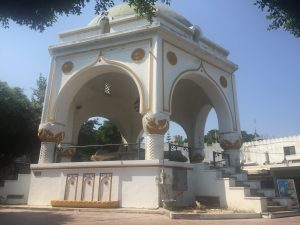
MARKET NEWS- MANDRAKI
- Peial el Din Mosque or Peial ed from Djami, Church Agios Fanourios, Byzantine, cruciform (Street St.Fanourios)

- Mosque Ntemirli or Ferrous Djami, old church and monastery, today ruined mosque (near St.Fanourios)
- Mosque Kavakli or KAvkli Djami, Located opposite the Mosque Ntemirli, Today church of St. Spyridon dedicated to former Metropolitan Spyridon Synodinos
- Mosque Choutai or Hudai Djami, Today the church Agios Theodoros (street Homer, Square Red Door)
- Mosque Dolapli or Freestanding Djami , Today the Church of the Trinity in the Jewish district in the north of the Gate of St. John (Praxiteles and Demosthenes)
- Mosque Chanzante or Hanzade, under the Italian Consulate, Today Holy Trinity, (in Ostructuring of the Knights)
- Glass Cizmeci, within Castle, the church of St. John the Baptist (Archbishop Street Efthymiou, the Red Door).
- Ilk Mihrab Mosque (first pilgrimage), Today the church of St. Catherine, in Jewish Quarter. It was the first Orthodox church converted into a mosque by Sultan Suleiman (in Demosthenes Street)
- Mosque Ender or gantry, Today the church of Our Lady of the Castle (square M. Alexander, Rhodes Old Town, near Hippocrates street)
- Fountain Mosque (Plato 20, Hippocrates square)


- Hall or Castellania Castellania (14th ) house of medieval merchants, with Renaissance elements, to the east of the "Bazaar Road" ie Socratous Street. Today houses the Municipal Library (Aristotelous 4, Hippocrates square)
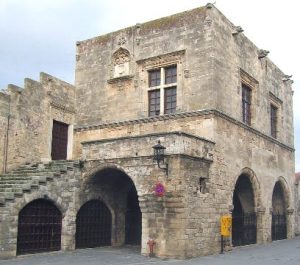
- Hostel Hospital or the Knights of St. Catherine, It was built in 1932 by Italian nobleman of the Order of Knights, Domenico D 'Alemagna for the care of the nobles who were visiting the island. The building was destroyed by bombings 1944. Located in the Jewish quarter, near St. Catherine's Gate (Square of Jewish Martyrs and Theseus, near Coast Sachtouri 30)
- Our Lady of Burgos ή Sainte-Marie du Bοurg, exemplifies Knights architecture, with many gothic elements(1311), in front of the Hospital of St. Catherine
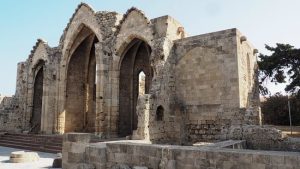
- Palace Admiralty or archdiocese, It was the residence of the Orthodox Metropolitan of the island (15th ), with gothic elements. Today belongs to the municipality of Rhodes and houses the state archives.

- Church of Our Lady of Victory (1481), built by M. Master D 'Aubusson, Located in the Jewish quarter, next to the church of St. Panteleimon and abuts the fortification.
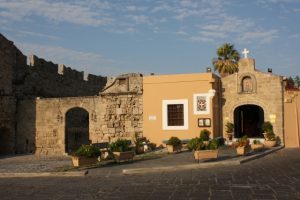
- residency, Super building of the Italian occupation of Rhodes to1927 built by architect Florestano Di Fausto, a plan similar to the Palace of the Doges of Venice, when he was commander of the Dodecanese, Italian Mario Lago (Mandraki harbor)
- Church of the Annunciation (1924-1929), in Basilica style, with a raised central aisle, roof and impressive spire 26 m. Built on plans of Bernard Eugene Antoin Rottiers and Eugene Flandin and supervision of the construction undertaken by the Italian architect Florestano di Fausto. It was a copy of the Cathedral of St. John Knights, located within the fortifications and destroyed 1856 by gunpowder explosion. Within the church you will see paintings by Fotis Kontoglou (Liberty square, Kings square. Georgiou Mandraki harbor)
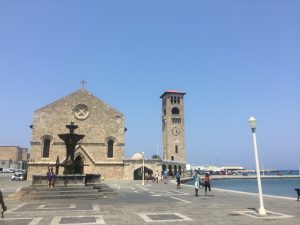
- Fountain – fountain, opposite the Church of the Annunciation. This is a copy of the medieval fountain (1279) Fontana grande city Viterbo, Italy. Constructed by architects brothers Giovanni and Ermanno Viterbesi Pizzichetti. The material used in construction is a gray volcanic stone, known as «piperno» (Liberty square, Mandraki harbor).
Outside the walls there are many monuments, as Mosque Murad-Reis (privateer and later Admiral of Suleiman I), near Port, domed tomb of Ahmed Pasha INATI, next to the Aegean University etc..
ACCESS
Access to the island of Rhodes can be done by ferries from Piraeus (duration of 14 until 20 hours, depending on the company) but also by local ferries from the other islands of the Dodecanese.
The island has an International Airport "Diagoras" (14 km from Rhodes Town) which receives flights from the Athens International Airport "Eleftherios. Venizelos "and charters direct flights from several destinations in Europe.
There is also airline connection, flying small propeller aircraft, with neighboring islands, as to Karpathos, Kos, Kalymnos, But Astypalaia and Thessaloniki, Mykonos, Santorini, HERACLION, Crete.
USEFUL ADDRESSES
Rhodes City, Liberty square, Rhodes, tel. : 2241361200, www.rhodes.gr
Rhodes police, tel. : 22410 23849
Rhodes hospital, tel.: 22413 60000
Central Port Rhodes, Liberty square, Rhodes, tel. : 2241022220, 2241028666,224102888
Central Port of Piraeus, coast Tzelepi 1, Piraeus, tel. : 14541, and Akti Miaouli 50, tel. : 2132147600
Hellenic Seaways, routes from Piraeus ships, tel. : 210 4199000
Blue Star Ferries, routes from Piraeus ships, tel. : 210 8919800
and ticket agency, Mandraki, Rhodes, tel. : 2241075655
Anek Lines, ticket agency, coast Sachtouri, Rhodes, tel.: 2241035066, 2241036170
International Airport "Diagoras", Paradisi area, tel. : 2241088700
Archaeological Museum of Rhodes, Medieval City, Chivalry Hospital, Rhodes, tel. : 22413 65256
People Cosmetic Rhodes Collection, Gjirokastra square, Medieval City, holster building, Rhodes, tel.: 22413 65200, 22410 25500

